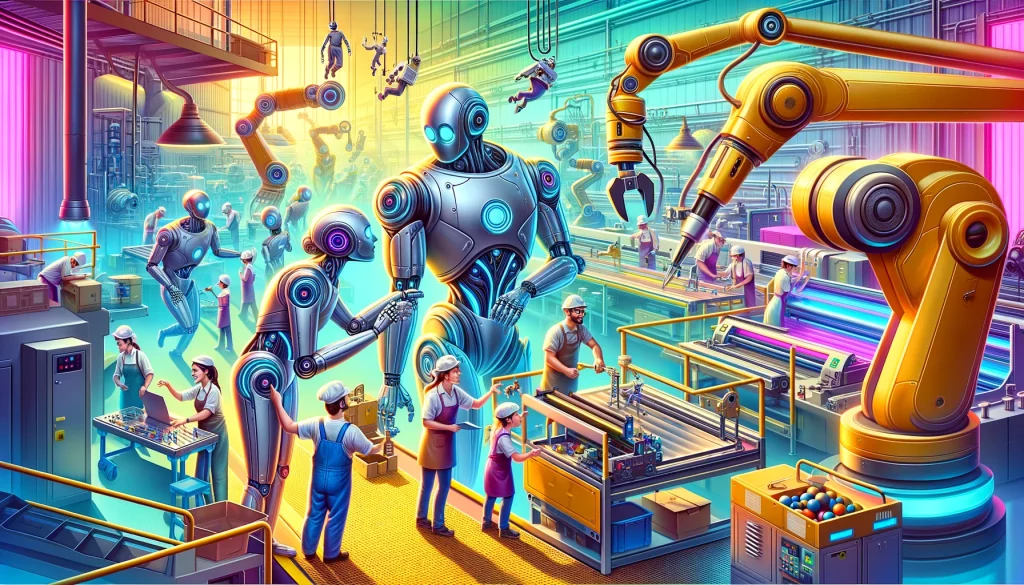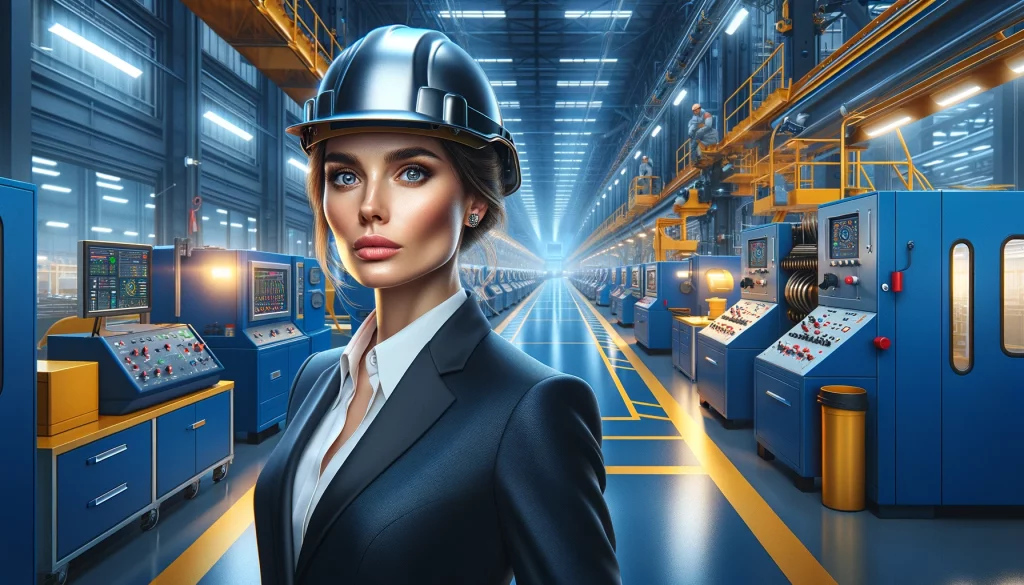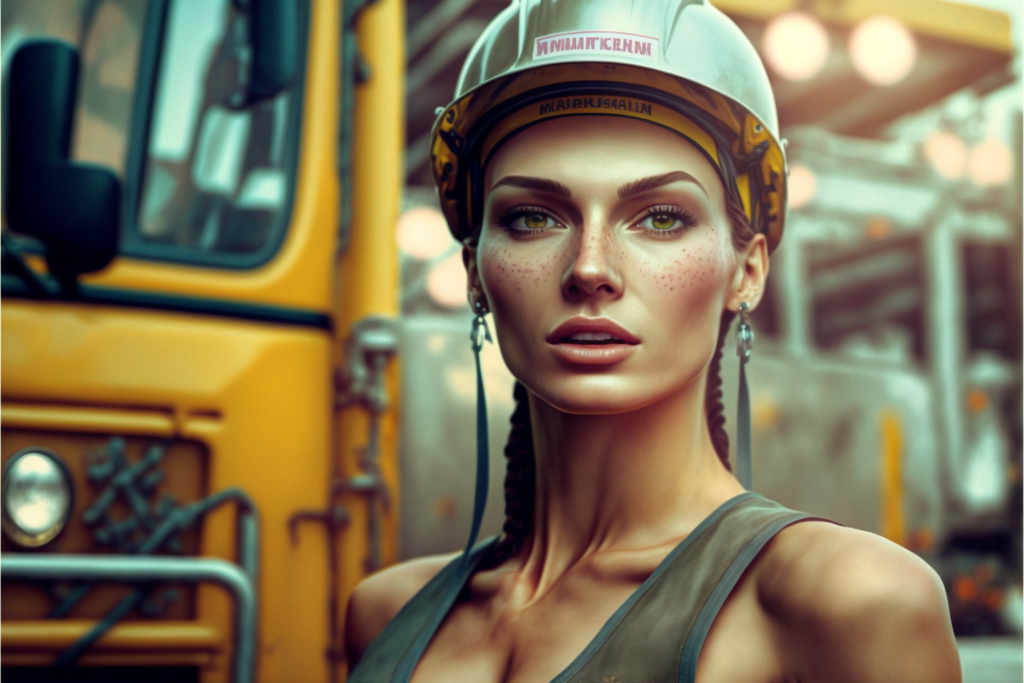Introduction: The Evolution and Current Landscape of the Manufacturing Industry
The manufacturing industry has undergone a significant transformation, evolving into a technologically advanced sector driving global economies. This evolution, mainly driven by the Fourth Industrial Revolution, has redefined the manufacturing landscape, making it crucial for market researchers and investors to stay informed.
Technological Advancements and Their Impact
The global manufacturing sector has experienced substantial changes due to technological advancements, climate change, and geopolitical tensions. Investments in digital technologies like artificial intelligence (AI), machine learning, and robotics have enhanced production capabilities and workforce structure in the industry. This investment in frontier technologies is key for staying competitive and resilient in a dynamic market.
Collaborative Efforts for Sustainable Growth
Leaders like Francisco Betti of the World Economic Forum emphasize the need for collaboration between governments and companies in the face of manufacturing disruptions. Such partnerships are vital for scaling technology adoption and ensuring inclusive, sustainable growth, addressing manufacturing challenges, and preparing the workforce for future demands.
Bridging Technology and Implementation
Implementing new technologies in manufacturing requires a strategic approach. Jay Lee from the University of Maryland underlines the importance of bridging the gap between technology and practical application, focusing on product quality, production efficiency, and supplier integration. Testing and validating these technologies in academia is crucial for purposeful innovation.
Sustainability and Environmental Responsibility
Sustainability is central to the manufacturing industry, as noted by Barbara Frei-Spreiter of Schneider Electric. The sector’s significant impact on global CO2 emissions necessitates decarbonization efforts, including electrification of processes and implementing energy-saving programs.
The Role of Employees in Technological Integration
Kathy Wengel from Johnson & Johnson highlights the importance of engaging employees in technology selection and implementation. Shop floor employees’ involvement is crucial for integrating operational technology (OT) in manufacturing processes, aligning technological advancements with operational needs, and improving resilience and reducing risks.
Preparing the Workforce for Future Challenges
The rapid evolution of the manufacturing sector underscores the importance of upskilling and reskilling programs. Jacqueline Poh of the Singapore Economic Development Board emphasizes collaborative efforts between industry, government, and educational institutions to prepare the workforce for advanced manufacturing.
Digital Tools and Economic Inclusion
Katy George of McKinsey & Company discusses how digital tools deployed at scale create new opportunities for manufacturing. These tools enable real-time insights and optimization across enterprises, enhancing cost-efficiency, reducing carbon footprints, and improving supply chain resilience.
In conclusion, the manufacturing industry is at a pivotal point, with technological advancements, sustainability efforts, and collaborative initiatives shaping its future. Understanding these dynamics is crucial for market researchers and investors aiming to successfully navigate this evolving landscape.
II. The Current State of Manufacturing
In 2023, the manufacturing industry continues to exhibit robust growth, transforming challenges such as supply chain disruptions, labor shortages, and economic uncertainties into opportunities for innovation.
Labor Challenges and Workforce Transformation
Significant labor issues, part of the Great Resignation, have led to a 60% increase in resignations in the manufacturing sector. Attracting and retaining younger talent is now a top priority, requiring competitive pay, benefits, and modern work environments.
Adapting to Employee Expectations
Manufacturers are implementing new policies to create better workplace environments, including higher wages, flexible hours, and wellness programs. These changes are essential for attracting and retaining talent in today’s competitive job market.
Product as a Service (PaaS) and Customer Engagement
Product as a Service (PaaS) is changing customer interactions in manufacturing. This model, involving equipment leasing and subscription-based services, benefits from advancements in IoT and AI. PaaS provides manufacturers with recurring revenue and deeper customer insights.
Industrial IoT (IIoT) Driving Innovation
Industrial IoT (IIoT) remains a key trend, enhancing logistics, predictive maintenance, and asset management. The manufacturing market for IoT is projected to reach $399.08 billion by 2026, highlighting the growing investment in this technology.
Enhancing Production with Digital Twins
Digital twins are revolutionizing production by creating virtual replicas of real-world equipment. This technology enables manufacturers to test, model, and train scenarios without physical interaction, boosting operational efficiency.
Overcoming Supply Chain Disruptions
Manufacturers are addressing supply chain challenges by insourcing logistics and developing in-house operations. This approach improves supply chain visibility and quality control, reducing shipping costs and time.
Reshoring and Near-Sourcing Initiatives
Reshoring and near-sourcing continue as significant trends. These strategies, driven by various factors including global labor cost changes and pandemic-induced supply issues, enhance supply chain resilience and contribute to local economies.
In summary, the manufacturing industry in 2023 navigates significant transformation, marked by labor market changes, technological advancements, and strategic responses to global supply chain challenges. These dynamics present both challenges and opportunities, shaping the future landscape of the industry.

III. Emerging Trends in Manufacturing Technology
Product as a Service (PaaS)
The emergence of Product as a Service (PaaS) marks a shift in consumer-manufacturer relationships. Enabled by IoT, AI, and predictive analytics, PaaS transforms traditional sales into leasing or subscription services, allowing for recurring revenue and enhanced customer insights.
Industrial IoT (IIoT) and Strategic Decision Making
Industrial IoT (IIoT) continues to be pivotal, enabling manufacturers to make strategic decisions using real-time data for cost reduction, efficiency, and safety improvements. The market value for IoT in manufacturing is projected to reach $399.08 billion by 2026.
Predictive Maintenance and Resolution
Advancements in predictive maintenance are now evolving into predictive resolution. Utilizing AI and machine learning, this approach enhances equipment efficiency, reduces costs, and improves repair success rates on the first attempt.
Digital Twins and Enhanced Efficiency
Advancements in IoT have led to the development of digital twins, virtual replicas of physical equipment, which allow manufacturers to run tests and model scenarios in a virtual environment, greatly enhancing operational efficiency.
Collaboration for Technological Advancement
Francisco Betti of the World Economic Forum emphasizes the need for collaboration between companies and governments to tackle disruptions in manufacturing. The Global Lighthouse Network is an initiative aimed at accelerating the deployment of 4IR technologies through knowledge exchange and best practices.
Integrating Technology with Purpose
Jay Lee from the University of Maryland highlights the importance of bridging technology and implementation in manufacturing. Strategic planning and continuous improvements are essential for maximizing the benefits of technological advancements, focusing on quality, efficiency, and supplier integration.
Sustainability in Manufacturing
Barbara Frei-Spreiter of Schneider Electric emphasizes sustainability in manufacturing, particularly in reducing CO2 emissions. Decarbonization efforts include electrification of processes and implementing energy-saving programs.
Employee Engagement in Technology Adoption
Kathy Wengel of Johnson & Johnson discusses the role of employees in technology selection and implementation. Engaging employees at all levels ensures successful technology deployment, resilience, and cost reduction.
Leveraging Automation and AI for Productivity
Jacqueline Poh of the Singapore Economic Development Board underscores the significance of automation and AI in enhancing productivity. Upskilling programs and collaborations are key to preparing the workforce for future manufacturing challenges.
Digital Tools and Economic Inclusion
Katy George of McKinsey & Company talks about how digital tools unlock new manufacturing opportunities, allowing real-time insights and optimization across enterprises. Integration of AI and automation leads to cost-efficiency and supply chain resilience.
IV. Challenges and Opportunities in Manufacturing
Adapting to Supply Chain Disruptions
Manufacturers are responding to supply chain disruptions by exploring in-sourcing and direct-to-consumer models, offering a strategic pivot to turn challenges into opportunities. Mergers and acquisitions are being used to modernize software ecosystems, indicating a proactive approach to prevailing issues.
Addressing the Great Resignation
The manufacturing sector has experienced a nearly 60% increase in resignations, a part of the wider Great Resignation trend. This situation has necessitated a focus on attracting, hiring, and retaining younger talent, demanding competitive pay, benefits, and aligning workplace environments with modern expectation.
Enhancing Workplace Environments
Manufacturers are increasingly adopting policies for better workplace environments, such as higher wages, flexible hours, and wellness programs. This shift is vital not only for attracting new talent but also for retaining existing employees in a competitive job market.
Product as a Service (PaaS) Opportunities
The rise of Product as a Service (PaaS) is reshaping customer-manufacturer interactions. This model allows manufacturers to shift from one-time sales to recurring revenue models, leveraging IoT, AI, and predictive analytics to understand and meet customer needs more effectively.
Investing in IIoT for Strategic Advantage
Industrial IoT (IIoT) remains a key trend, enabling informed, strategic decisions using real-time data. The manufacturing market for IoT is expected to expand significantly, reflecting the sector’s growing investment in this technology.
Evolution of Predictive Maintenance
Predictive maintenance is evolving into predictive resolution, offering more accurate insights and solutions to equipment issues. Advancements in AI, machine learning, and NLP have been crucial in this transition, enhancing efficiency and reducing costs.
Modernizing ERP Systems
There’s a trend towards modernizing ERP systems, moving away from heavy customization towards more streamlined, cloud-based solutions. This shift is essential for simplifying operations and accommodating the growth of manufacturing companies.
Big Data in Manufacturing
The increasing importance of Big Data, driven by IIoT and predictive technologies, enables manufacturers to make more data-driven decisions. This trend is crucial for understanding business operations and supporting growth strategies.
Reshoring and Near-Sourcing Initiatives
Reshoring and near-sourcing remain strong trends, as manufacturers aim to reduce dependencies on foreign materials. This shift is crucial for supply chain resilience and contributes positively to local economies.
V. Conclusion and Future Outlook
Post-Pandemic Growth and Technological Advancements
The manufacturing industry is poised for significant growth in the post-pandemic era, driven by advancements in artificial intelligence, machine learning, and automation technologies. These innovations are set to revolutionize industrial and product manufacturing processes, enhancing efficiency and productivity across the sector.
The Importance of Long-Term Planning in an Uncertain Economy
In the face of economic uncertainties, strategic long-term planning becomes essential for manufacturing companies. Embracing flexibility and adaptability in business models will be crucial for navigating through economic headwinds and leveraging emerging opportunities in the market.
Reshaping Manufacturing with Sustainability Initiatives
The push towards sustainable manufacturing practices is gaining momentum. Reduction in carbon emissions and implementation of eco-friendly processes are not just environmental imperatives but also key factors for market competitiveness and consumer preference.
Population Growth and the Rising Middle Class: A New Consumer Base
Global population growth and the emergence of a new middle class are creating new markets for manufacturing companies. This demographic shift presents an opportunity for manufacturers to expand their product offerings and explore new market segments.
Increased Interconnectivity and Its Impact
The rise in global interconnectivity, fueled by advancements in communication and information technology, is set to further integrate global manufacturing networks. This trend will facilitate smoother international collaboration and supply chain management, opening new avenues for global trade and investment.
Bold Predictions for 2030
Looking towards 2030, we can anticipate a manufacturing landscape deeply integrated with advanced technologies such as 5G, IoT, and edge computing. These technologies will not only enhance operational efficiency but also drive innovation in product design and customer engagement strategies. Additionally, a surge in robotics and automation adoption is expected to reshape workforce dynamics, requiring a significant focus on upskilling and reskilling initiatives.
If you found our insights on Manufacturing, Industrial Manufacturing, Product Manufacturing, and Manufacturing Technology informative, we invite you to explore our other industry reports. These articles provide valuable context and analysis on various sectors, all crucial for finance professionals and investors. Discover how social media is impacting industry growth, delve into the Baby Boomer industry growth report, understand the connection between consumer spending habits and industry growth, and much more. Gain insights into human capital and employee retention, the impact of government regulations on the pharmaceutical industry, and cross-border mergers and acquisitions. Explore real-life examples of how trade tariffs affect different industries, the rising economies in Asia-Pacific, insights for finance professionals in the mortgage lending industry, the future of the oil and gas industry, a look into the future of the utilities and power sector, and the cloud computing industry report.











